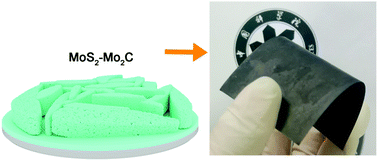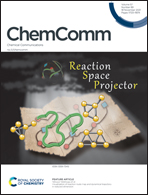A three-dimensional macroporous framework molybdenum disulfide–carbide heterojunction for highly efficient electrocatalytic hydrogen evolution at high current densities†
Abstract
Herein, we report a facile solid-state synthesis strategy for the synthesis of a three-dimensional (3D) macroporous framework molybdenum disulfide–carbide (MoS2–Mo2C) heterojunction. The MoS2–Mo2C/Mo electrode exhibits excellent HER activity with low overpotentials of 56 and 446 mV at current densities of 10 and 1000 mA cm−2, respectively, in alkaline electrolytes.



 Please wait while we load your content...
Please wait while we load your content...